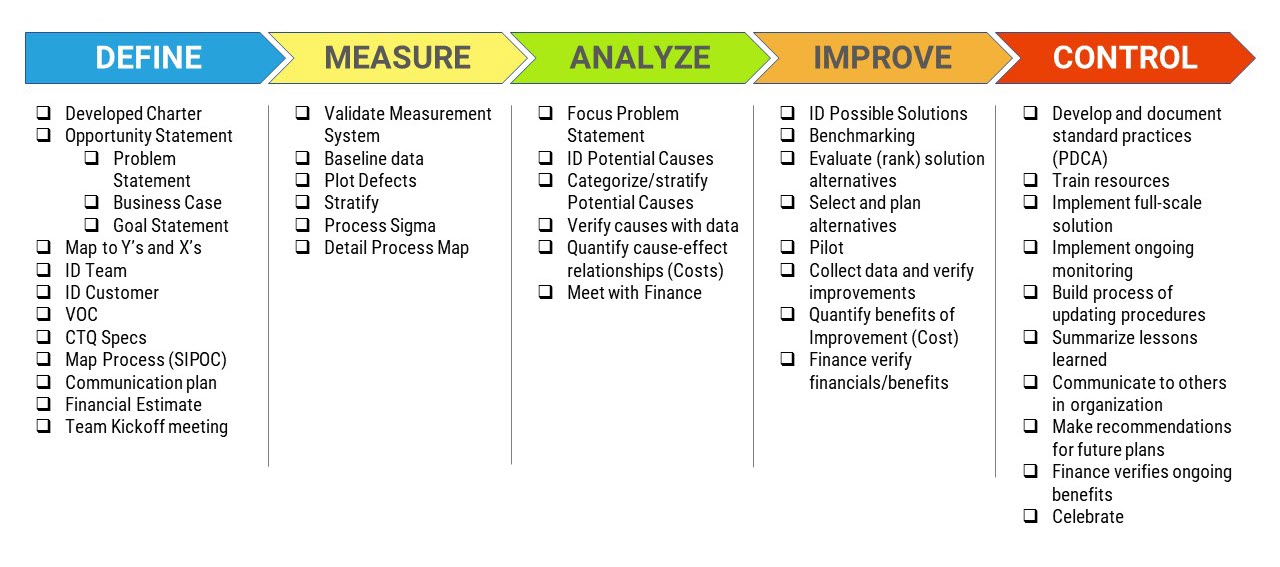What do You Understand by Lean Process Improvement?
Are you in a service industry, mature industry, or in any other organization that handles few trades? Perhaps the Theory of Constraints or Lean thinking can work better for you.last updated Monday, April 1, 2024
#Process Improvement #Lean Process
| | John Burson | Subscribe |

CONTENTS
What is Lean Process Improvement?
Lean Thinking
Have you ever wondered what lean thinking means? As the name implies, it’s a way of viewing the world. Lean is all about removing waste, focusing, and increasing the customer's value. It is also about process flows, engaging in activities that add value to the customer, and eliminating activities that don’t. Adding value also means generating revenue. If something doesn’t generate revenue, it will add costs, not weight.
Lean Process Flow
Follow these basic steps to assess lean operations:
- Determine the structure of activities
- Identify some of the activities that add value
- Allow clients to pull services or products
- Eliminate all activities that don’t add value to your business
- Improve the process
Companies that have very short order-to-delivery cycles are lean operations. This means that they have a strong cash cycle.
Lean 5S System
The lean 5S system of organization is another vital tool used in lean thinking. A messy desk, workplace, or manufacturing cell only makes it difficult to find things, quickly introduces mistakes or accidents, and it’s straightforward to get distracted. The 5S stands for:
- Sort,
- Set in Order,
- Shine,
- Standardize,
- Sustain.
The skeletal system is more visual, Zen-like, and even picturesque. This is because it’s a state of mind and doesn’t require any mathematical analysis like in Six Sigma.
Lean Thinking vs. Six Sigma
The Six Sigma process views process variation as waste. On the other hand, lean thinking focuses more on process flow and regards other activities that don’t add value to destruction. The Six Sigma approach uses statistics to determine any variations. In contrast, lean uses visuals such as flowcharting, process mapping, visual dashboards, and value stream mapping to understand the process flow.

Lean thinking is more suitable for mature, slow-growth, low-transaction industries or organizations that don’t often use mathematical tools. It also focuses on cutting costs. You must balance the resources released for lean or Six Sigma improvement programs.
Lean Process Improvement
Lean thinking can work best when running a slow-growth, mature, non-math, or low-transaction business.
Subscribe to Paperfree Magazine
EB5 Visa Consultants by Paperfree EB5 Program
Get dedicated service, from finding the right information to complex investment challenges.

Real estate investment strategies

Multifamily investment strategy to boost investment portfolio returns.
Diversify in multifamily investment strategy to lower volatility and boost portfolio returns.

Value add real estate strategy helps investors drive capital growth.
The value add real estate strategy's first goal is capital growth, the second goal is some income. The strategy works with all property types

Investing in senior housing. Invest in senior housing real estate to drive stable returns.
Senior living investments will create social impact on the market with strong fundamentals: growing demand, resilience to economic cycles.

Invest in build to rent investment funds
Build to rent investment funds for passive real estate investing.

Invest In Real Estate Private Equity
Discover diverse private equity real estate investment opportunities.

Core real estate investment strategy to drive income vs capital growth
Core Real Estate Strategy is one of the most conservative modern real estate investment strategies focusing primarily on income.

Passive real estate investing, best investment strategies, opportunities and more.
Passive real estate investing allow you to be a silent partner in large-scale real estate investments that can produce earnings and return on investment.

Invest in Syndication Real Estate
Investing in real estate syndicates as a part of alternative investments strategy

Investing in apartment buildings
Apartment investments are a sound investment option for numerous investment strategies.

Multifamily fund
Multifamily funds have one of the highest average annual returns of all real estate investments. Find private and public multifamily investment funds below.

Multifamily value add strategy
The main attribute of the multifamily value add strategy is the focus on capital growth. The investment strategy has a median risk profile.

Core plus investment strategy real estate to generate income
Core Plus Strategy focus to generate income based on mid-low risk profile. Learn more.

Opportunistic real estate investment to maximize return on investment
Opportunistic real estate investment strategy drives capital growth with heights risk of default.

EB 5 investment projects list
Find the best fit for your immigration strategy and investment goals for EB5 projects in USA local markets.

Value add real estate funds
Value add real estate funds aim to increase cash flow and value by buying and improving underutilized assets, potentially yielding higher returns than traditional real estate investments.